- 1School of Business Administration, Shanghai Lixin University of Accounting and Finance, Shanghai, China
- 2School of Finance and Economics, Jiangsu University, Zhenjiang, China
- 3School of Statistics and Mathematics, Shanghai Lixin University of Accounting and Finance, Shanghai, China
- 4Huaxia Bank Shanghai Branch, Shanghai, China
In the VUCA (Volatility, Uncertainty, Complexity, and Ambiguity) era, there is growing concern about the impact of differential leadership, a leadership style with localized characteristics, on employee perspectives and recommendations. This study constructs a dynamic game model to examine the influence of differential leadership on the silence behavior of insiders (employees perceived as close to the leader) and outsiders (employees perceived as distant from the leader). The results of the study found that both insiders and outsiders who want to achieve and sustain benefits need to demonstrate non-silent behaviors in order to gain the attention and goodwill of the leader. Insiders’ self-efficacy, outsiders’ out-group preference and employees’ proactive personality are the key factors driving their non-silence behaviors, constructing a constructive atmosphere in the organization, and bringing perceived benefits. This study provides relevant insights and reflections for the high-quality development of family enterprises. This study, on the one hand, addresses the research gap concerning self-perceived benefits and out-group favoritism within the organizational framework of family businesses against the backdrop of Chinese traditional culture. It establishes an analytical framework for the impact of “differential leadership-self-perceived benefits/out-group favoritism-employee silence behavior” in family businesses. On the other hand, it focuses the research lens on the relatively novel topic of the theoretical and practical examination of the relationship between differential leadership and employee silence behavior in family businesses. From a micro perspective, this study offers a new direction for Chinese family businesses to alleviate employee silence behavior and successfully achieve transformation.
1 Introduction
Leadership style, as one of the important factors affecting organizational management and leadership effectiveness, has received a lot of attention and focus from the management community [1]. In the early stages of leadership theory research, Chinese scholars tended to base their work on Western leadership theories and value systems. However, different cultural contexts nurture and shape distinct leadership styles, which means that one leadership style has different effects in different contexts. It is unreasonable to apply leadership styles from Western cultural contexts to Chinese cultural societies. Consequently, The structure of Chinese society, characterized by a”differential order pattern”, has emerged. Existing research has confirmed its widespread existence and practical effectiveness in Chinese enterprise organizations [2]. As leaders’ behavior is influenced by their unique culture, they treat their employees differently from inside and outside. This is reflected in a “differential” style of leadership [3]. Specifically, differential leadership typically classifies individuals into insiders and outsiders based on three criteria: closeness (the degree of intimacy or proximity to the leader loyalty (the level of allegiance to the leader and the organization) and talent (the individual’s exceptional abilities). Furthermore, in Chinese family enterprises that emphasize kinship, parental authority, a highly partial differential leadership style is more likely to exist. The leaders tend to favor insiders by providing them with preferential treatment and greater access to resources, a privilege not extended to outsiders. This unequal favoritism motivates all members to strive harder to gain the leader’s recognition, despite its inherent unfairness. Therefore, exploring the differential leadership style of Chinese enterprise leaders within the context of Chinese family enterprises holds significant theoretical and practical value.
In the VUCA era, with the increasing competition among family enterprises in the transition economy, the uncertainty of the economic and social environment has brought the views and suggestions of employees to a wider attention. Employees, as a crucial part of enterprise management, possess numerous key information and can keenly identify potential crises in enterprise management. However, under external pressure, they often choose silence to express their opinions. This employee silence not only adversely affects their emotional communication and interpersonal relationships but also undermines the quality of decision-making by corporate management [4]. Under the influence of China’s traditional “circle” culture, a ripple-like relationship network has been formed within China’s enterprises, that is, the leader is the core and spreads to the outside layer by layer, and then derives the leadership style with local characteristics. Existing research on the impact of differential leadership on employee silence behavior, especially empirical research, has largely been conducted along two independent threads: the insiders and outsiders. The delineation and formation of the insiders and outsiders in the workplace stem from leaders’ perceptions of different emotional responses from their subordinates. However, the inter group boundaries between insiders and outsiders are permeable to a certain extent, with insiders potentially being excluded from the group by the leader and outsiders having the opportunity to become insiders through their efforts. Therefore, regardless of whether they are insiders or outsiders under differential leadership, employees will engage in positive behaviors to win the favor of their leaders [5]. For insiders under differential leadership, they tend to reduce employee silence and actively contribute suggestions for organization to maintain their current roles and avoid replacement by other organizational members. Equally, outsiders under differential leadership also strive to adopt proactive strategies to achieve upward mobility and find ways to become part of the insiders’ group. Leaders who effectively utilize this differentiated management strategy and intentionally strengthen their leadership over employees while adhering to the principle of putting the public interest first can generate positive workplace stimulation and improvement effects [6].
This study adopts the method of dynamic game and uses the perspective of the interaction between insiders and outsiders to study the impact of insiders’ and outsiders’ on silent behavior based on the perceived benefits of the dynamic status flow of differential order leadership. We believe that differential leaders, as representatives of the organization (or team), are the formulators of organizational (or team) decisions and strategies, artificially creating a division between “insiders” and “outsiders” among employees. Thus, both insiders and outsiders strive to pursue their maximum benefits. Insiders’ interests are mainly reflected in improving their own benefits and performance levels and maintaining their status as members of the leader’s insider group. Outsiders’ interests are mainly reflected in improving their own benefits and achieving mobility in group status [7]. Therefore, the status mobility of employees within family enterprises is a process involving both insiders and outsiders, requiring a dynamic game between them based on perceived benefits and significantly impacting their performance levels through this process. This study addresses two key aspects within the context of family enterprises in Chinese traditional culture. First, it compensates for the inadequacy of research on self-efficacy and out-group favoritism within the organizational framework of family enterprises by constructing an analytical framework that examines the influence of “differential leadership—self-efficacy/out-group favoritism—employee silence behavior” in family enterprises. Second, it focuses on the relatively novel topic of the relationship between differential leadership and employee silence behavior in family-owned enterprises, both theoretically and practically. From a micro-level perspective, this study provides a new direction for alleviating employee silence behavior and facilitating successful transformation in Chinese family enterprises. In doing so, the research not only enriches the theoretical understanding of leadership styles specific to the Chinese cultural context but also offers practical implications for improving organizational dynamics and promoting sustainable development in family businesses.
2 Construction of game theory model
This study considers a simplified version of the Prisoner’s Dilemma game and designs a game model of differential leadership affecting employees’ non-silence behavior [8]. The study refines the participants of non-silence behavior into insiders and outsiders, assuming that the categories of insiders and outsiders as defined by the leader are completely consistent with the employees’ own perception of being insiders or outsiders. In the actual workplace, there is an objective reality of information asymmetry between employees. Therefore, based on their own actual earnings, they will be compared with other members of the organization, so as to form an index of actual earnings within the organizational network. It is assumed that the actual benefit generated by both participating employees taking non-silence behavior is
In Equation 1, where
This study focuses on the effect of differential leadership on the silent behavior of its own employees and outsiders. we assume that both insiders and outsiders participating in the game are rational economic agents. In the context of incomplete information symmetry, they pursue the maximization of their own interests during their respective positional mobility processes. However, the interest demands of these two gaming entities do not fully align. The expected benefits for insiders primarily manifest as improvements in their personal interests and performance levels, as well as maintaining their status and favorable impressions within the leader’s insider group. In contrast, the expected benefits for outsiders mainly involve enhancements in their personal interests and performance levels, along with achieving mobility in group status. Moreover, despite insiders and outsiders working together over the long term, it is difficult for each to gain a total understanding of the other’s information [9]. Therefore, the comprehensive benefits arising from different behaviors chosen by employees under differential leadership can be formulated as follows:
In Equation 2, where
Due to the uncertainty of information, employees cannot guarantee that leaders will definitely provide them with the same actual benefits as other employees when choosing to adopt non-silence behaviors. Employees merely observe and compare the behaviors of others and believe that there is a certain probability of obtaining equivalent benefits after they engage in the same non-silence behaviors. Since this benefit is not necessarily granted by the leader but is a potential benefit perceived by the employee, it is considered a perceived benefit. Therefore, there is a discrepancy between individual perceived benefits and actual benefits. Based on the weight effect, this study takes perceived benefits as the main focus of the process. The perceived benefit for individual
In Equation 3, where
In particular, the employee groups can be categorized into non-silence insiders, silence insiders, non-silence outsiders, and silence outsiders. Therefore, this study sets forth the perceived benefits generated by different types of employees engaging in various behavioral strategies:
In Equation 4, where
Furthermore, employees individually decide whether to change their strategies based on the perceived benefits derived from choosing the behavior of their colleagues. This process can be described as follows: Firstly, employee
In Equation 5, where
3 Model simulation analysis
3.1 Initial model simulation analysis
With the initial individual relational network structure as a BA scale-free network, this study executes the above game model of differential leadership influencing employee silencing behavior. Initially, the BA scale-free network consisted of
Figure 1 illustrates the variation in the proportion of employees choosing silence behavior, denoted as
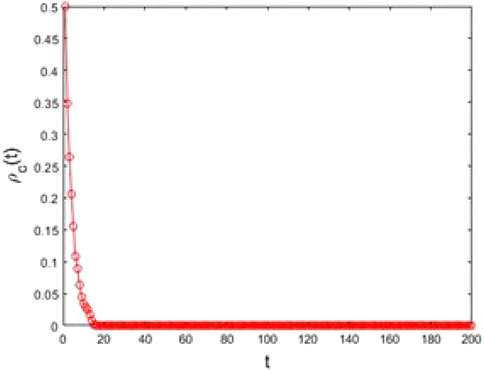
Figure 1. Relationship between the proportion of employees choosing silent behavior
Figure 2 depicts how the proportion of employees ultimately choosing silence behavior, denoted as
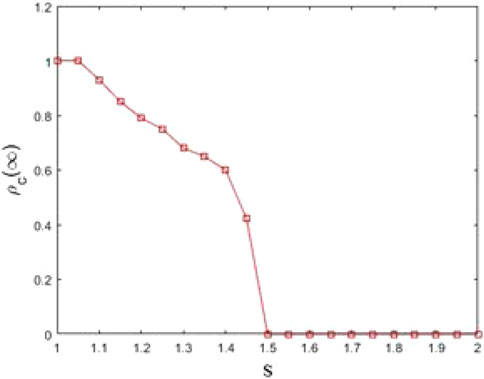
Figure 2. Relationship between the proportion of employees choosing silent behavior
To some extent the proactive personality coefficient
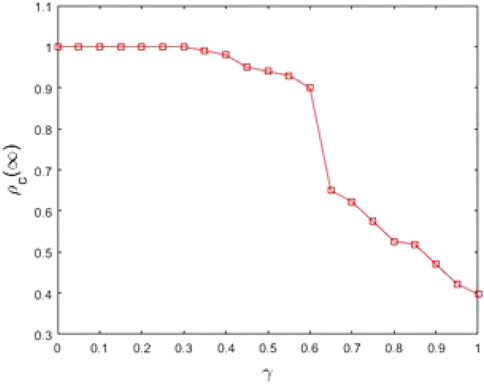
Figure 3. Relationship between the proportion of employees choosing silent behavior
3.2 Model extension and analysis
Confronted with the uncertainty of the external environment, the actual and perceived benefits of employees are influenced by many factors, such as leader behavior, employee psychological factors, and actions. Let
Based on the above assumptions, an analysis of the dynamic game process of the interests of both insiders and outsiders in the selection of non-silence behavior under incomplete information dynamic gaming is conducted. This involves considering the two factors of insider and outsider employees, silence behavior, and non-silence behavior. The specific extension form of the game includes the following elements:
(1) Set of participants: outsider employees, insider employees;
(2) Factors considered by participants: action adjustment changes with perceived benefits;
(3) Action space of participants: insider employees can choose non-silence behavior or silence behavior; outsiders can also choose non-silence behavior or silence behavior.
Specifically, the employee groups of interest can be distinguished as non-silence insiders, silence insiders, non-silence outsiders, and silence outsiders. Therefore, this study sets the average actual benefits generated by different types of employees adopting different behavioral strategies as follows:
In Equation 6, where
It is undeniable that any employee who performs positive organizational behavior is intended to reap the tangible benefits of the implementer or organization of the differential leadership style. However, due to information uncertainty and employees’ bounded rationality, employees are unable to accurately estimate the actual benefits during the implementation of their behaviors. Therefore, although employees choose their behavioral strategies based on observing the actual benefits obtained by other employees’ behavioral strategies, neither transitioning from silence to non-silence nor from non-silence to silence guarantees that the implementer of the differential-order leadership style will provide them with the same actual benefits as other employees. Employees merely observe and compare the behaviors of others and believe that there is a certain probability of obtaining equivalent benefits by executing the same behaviors [12, 13]. Since this benefit is not guaranteed by the leader but is perceived as potentially obtainable by the employee, it can only be considered as a benefit expectation when estimating employees’ behavioral transitions (i.e., the perceived benefit of performing the behavior). Therefore, this study further defines the average perceived benefits for non-silence insiders, silence insiders, non-silence outsiders, and silence outsiders as follows:
In Equation 7, where
However, as described in the model presented earlier, insiders’ non-silence behavior, motivated by self-efficacy, is driven by the pursuit of higher benefits under the premise of actually possessing “psychological capital”. Conversely, outsiders’ non-silence behavior, motivated by out-group favoritism, forms a positive behavioral orientation under the premise of hoping to possess “psychological capital”. Therefore, the actual “psychological capital” represented by self-efficacy, compared to the hoped-for “psychological capital” represented by out-group favoritism, can bring different perceived benefits to employees engaging in the same non-silence behaviors.
Figure 4 illustrates the changes in perceived benefits S arising from individuals’ choices between silence and non-silence behaviors in a BA scale-free network as the number of game rounds t increases. Specifically, Figure 4A depicts the scenario where employees adopt a silence strategy and how their perceived psychological benefits evolve with increasing game rounds; Figure 4B shows the scenario where employees adopt a non-silence strategy and the corresponding changes in their perceived psychological benefits over time. By comparing Figures 4A, B, it can be observed that as the number of game rounds increases, the perceived benefits of employees who choose silence gradually decline, whereas those of employees who choose non-silence gradually increase. Therefore, within the structure of a BA scale-free network, employees who adopt non-silence behaviors experience an increase in their perceived benefits, suggesting that employees who opt for silence anticipate maximizing their returns by altering their behavioral strategies. This finding aligns with the implications of differential leadership, where the insiders and the outsiders may perceive different incentives and outcomes based on their proximity and relationship with the leader.
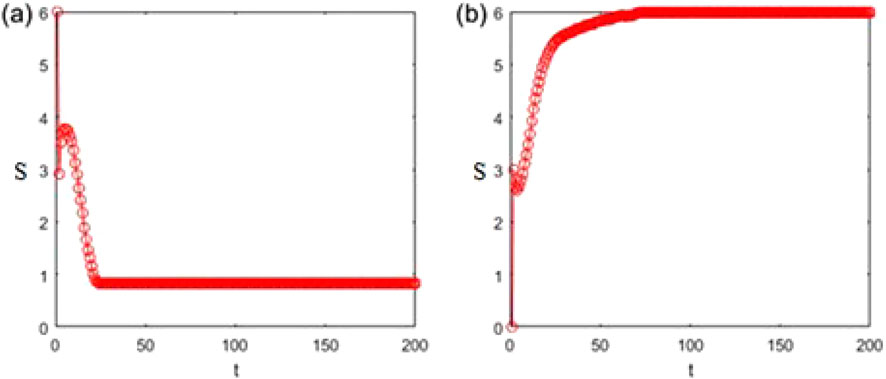
Figure 4. (A) The relationship between perceived benefits S of employees choosing silence behavior and game cycle
Subsequently, we analyze the impact of perceived benefits S and proactive personality coefficient
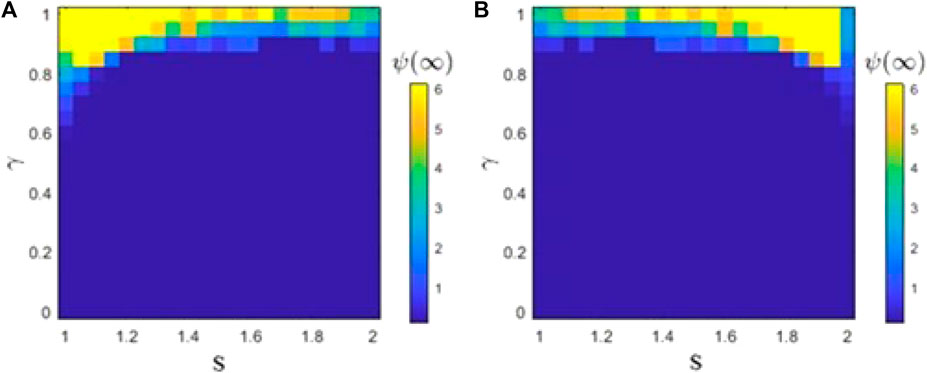
Figure 5. (A) The relationship between employees’ psychological gains from adopting silence behavior and the proactive personality coefficient
According to Figures 5A, B, it can be inferred that as the proactive personality coefficient
4 Research conclusion
(1) Employees’ non-silence behavior involves a game-playing process between the insiders and the outsiders. Through the aforementioned dynamic game analysis between insiders and outsiders, it is evident that not only do insiders require leaders’ support and encouragement to enhance their personal gains and performance levels, as well as to maintain their status and positive impressions within the leader’s insider group, but outsiders also need leaders’ acceptance and assistance to improve their personal gains, performance levels, and achieve mobility within the group hierarchy. Therefore, both insiders and outsiders need to engage in non-silence behavior to win the favor of leaders in order to achieve their optimal perceived benefits.
(2) Employees’ non-silence behavior is influenced by perceived benefits. According to the evolutionary game results above, Both insiders and outsiders will participate in non-silence behavior only if they believe that non-silence behavior increases perceived benefits and silence behavior decreases perceived benefits, i.e., non-silence behavior is positively related to perceived benefits. For outsiders, their perceived benefits differ significantly from those of insiders, indicating that in the context of differential leadership, achieving non-silence behavior for outsiders is a difficult process and may encounter more obstacles. Leaders’ encouragement and support are necessary for outsiders to be willing to invest more costs and efforts in their status mobility, thereby increasing the possibility of achieving it.
(3) Different perceived benefits essentially respond to employees’ psychological states. Under the stimulation of self-efficacy, insides produce non-silent behavior and intend to pursue greater benefits. The purpose of such insiders to pursue higher benefits under the premise of actually holding “psychological capital” is to respond to the current psychological state, so as to generate a higher level of perceived benefits. In contrast, outsider employees have non-silent behavior stimulated by the preference of outside groups. Such outsiders form a positive behavior orientation on the premise of holding “psychological capital”, so the perceived benefits they form are bound to be lower than their own employees. Therefore, The “psychological capital” actually held by the representative of self-efficacy and the “psychological capital” held by the representative of the preference of the outside group actually represent the different organizational status of “insiders” and “outsiders”, resulting in employees performing the same non-silent behavior but not getting the same benefits.
(4) Proactive personality has a significant impact on the perceived benefits and employee non-silence behavior. In a differential leadership environment, both insiders and outsiders are in a dynamic state of status mobility. For insiders with high proactive personality, they are willing to actively seek opportunities to increase their perceived benefits and actively engage in non-silence behavior to stabilize their status and satisfy their interests. For outsiders, the process of status mobility is a long and arduous journey. With high proactive personality, outsiders are more likely to actively address difficulties encountered in their work, demonstrate more organizationally beneficial behaviors, and believe that their efforts and dedication can lead to performance improvements due to the positive correlation between work engagement and employee performance, thereby increasing their perceived benefits and promoting non-silence behavior.
In summary, this study adopts a dynamic evolutionary game approach to establish a dynamic game model with incomplete information between insiders and outsiders, examining the impact of differential leadership on non-silence or silence behavior among insiders and outsiders. By analyzing the dynamic changes in perceived benefits for both insiders and outsiders, the research findings reveal that both insiders and outsiders need to demonstrate non-silence behavior to gain leaders’ attention and favor in order to achieve and maintain benefit seeking. Self-efficacy for insiders is the key driver of their non-silence behavior, while out-group favor for outsiders is the key driver. Furthermore, proactive personality further builds an organizational voice climate, generates perceived benefits, and provides relevant insights and reflections for the high-quality development of family enterprises.
Data availability statement
The raw data supporting the conclusions of this article will be made available by the authors, without undue reservation.
Author contributions
JL: Conceptualization, Funding acquisition, Methodology, Project administration, Supervision, Writing–review and editing. TY: Visualization, Writing–original draft, Writing–review and editing, Formal Analysis, Investigation. YQ: Data curation, Methodology, Writing–original draft. XH: Conceptualization, Project administration, Resources, Validation, Visualization, Writing–original draft.
Funding
The author(s) declare that financial support was received for the research, authorship, and/or publication of this article. This research was funded by The National Natural Science Foundation of China, grant numbers 72372106 and 72072076, National Statistical Research Program Project, grant numbers 2024LY040.
Conflict of interest
Author XH was employed by company Huaxia Bank Shanghai Branch.
The remaining authors declare that the research was conducted in the absence of any commercial or financial relationships that could be construed as a potential conflict of interest.
Generative AI statement
The author(s) declare that no Generative AI was used in the creation of this manuscript.
Publisher’s note
All claims expressed in this article are solely those of the authors and do not necessarily represent those of their affiliated organizations, or those of the publisher, the editors and the reviewers. Any product that may be evaluated in this article, or claim that may be made by its manufacturer, is not guaranteed or endorsed by the publisher.
References
1. Holmes RM, Hitt MA, Perrewé PL, Palmer JC, Molina-Sieiro G. Building cross-disciplinary bridges in leadership: integrating top executive personality and leadership theory and research. Leadersh Q (2021) 32:101490. doi:10.1016/j.leaqua.2020.101490
2. Yueru M, Tongtong B. Research on the influence of employee-organization family-like exchange relationship on unethical pro-organizational behavior. Manag Rev (2022) 34:203. doi:10.14120/j.cnki.cn11-5057/f.2022.06.009
3. Song X, Xiang M, Liu Y, Yu C. Relationship between job satisfaction and burnout based on a structural equation model. J Occup Environ Med (2020) 62:e725–31. doi:10.1097/jom.0000000000002040
4. Milliken FJ, Morrison EW, Hewlin PF. An exploratory study of employee silence: issues that employees don’t communicate upward and why. J Manag Stud (2003) 40:1453–76. doi:10.1111/1467-6486.00387
5. Cropanzano R, Mitchell MS. Social exchange theory: an interdisciplinary review. J Manag (2005) 31:874–900. doi:10.1177/0149206305279602
6. Boer D, Deinert A, Homan AC, Voelpel SC. Revisiting the mediating role of leader–member exchange in transformational leadership: the differential impact model. Eur J Work Organizational Psychol (2016) 25:883–99. doi:10.1080/1359432x.2016.1170007
7. Sumarmi S, Muchran M, Sudaryana A. Authentic leadership and employee silence intention: mediated by perceptions of organizational politics and organizational commitment. J Econ and Management/University Econ Katowice (2024) 46:424–47. doi:10.22367/jem.2024.46.16
8. Spurnỳ J, Kopeček I, Ošlejšek R, Plhák J, Caputo F. The prisoner’s dilemma in the workplace: how cooperative behavior of managers influence organizational performance and stress. Kybernetes (2022) 51:52–76. doi:10.1108/k-04-2020-0229
9. Chen Z. Further investigation of the outcomes of loyalty to supervisor: job satisfaction and intention to stay. J managerial Psychol (2001) 16:650–60. doi:10.1108/eum0000000006305
10. Lei H, Leaungkhamma L, Le PB. How transformational leadership facilitates innovation capability: the mediating role of employees’ psychological capital. Leadersh and Organ Develop J (2020) 41:481–99. doi:10.1108/lodj-06-2019-0245
11. Eliyana A, Ma’arif S, Muzakki . Job satisfaction and organizational commitment effect in the transformational leadership towards employee performance. Eur Res Manag Business Econ (2019) 25:144–50. doi:10.1016/j.iedeen.2019.05.001
12. Dyne LV, Ang S, Botero IC. Conceptualizing employee silence and employee voice as multidimensional constructs. J Manag Stud (2003) 40:1359–92. doi:10.1111/1467-6486.00384
Keywords: differential leadership, the insiders and outsiders, employee silence behavior, family enterprise, game study
Citation: Lu J, Yang T, Qin Y and Hu X (2025) Game-theoretic analysis of the impact of differential leadership on employee silence behavior in Chinese family enterprises. Front. Phys. 12:1536325. doi: 10.3389/fphy.2024.1536325
Received: 28 November 2024; Accepted: 10 December 2024;
Published: 03 January 2025.
Edited by:
Dun Han, Jiangsu University, ChinaReviewed by:
Yinde Zhao, Zhejiang International Studies University, ChinaDeli Xu, Changzhou Institute of Technology, China
Copyright © 2025 Lu, Yang, Qin and Hu. This is an open-access article distributed under the terms of the Creative Commons Attribution License (CC BY). The use, distribution or reproduction in other forums is permitted, provided the original author(s) and the copyright owner(s) are credited and that the original publication in this journal is cited, in accordance with accepted academic practice. No use, distribution or reproduction is permitted which does not comply with these terms.
*Correspondence: Ting Yang, eWFuZ195dWhhbjAzMTZAMTYzLmNvbQ==
 Jie Lu
Jie Lu Ting Yang
Ting Yang Yi Qin3
Yi Qin3